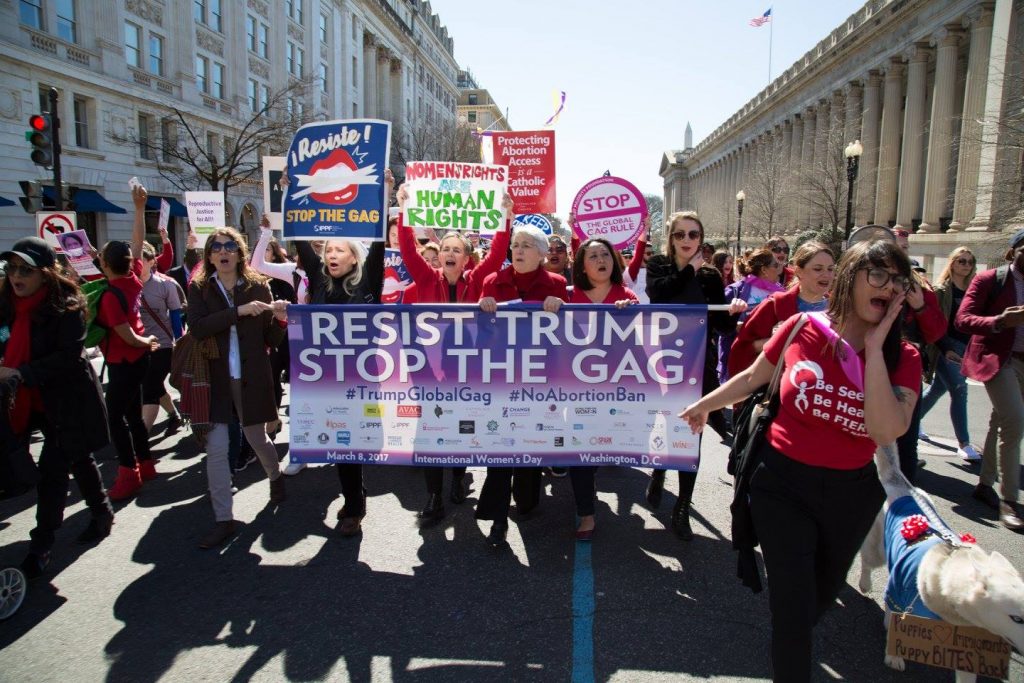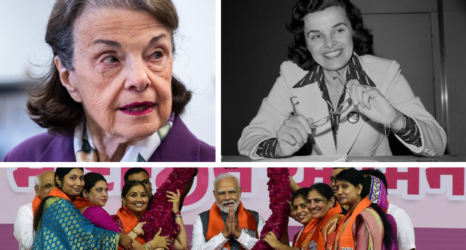The United States is now bracketed by neighbors practicing international affairs with a feminist twist.
In 2017, Canada adopted a feminist international assistance policy, designed to promote feminism and the rights of women and girls—including abortion rights—abroad. And in January 2020, Mexico became the first Latin American country to announce a feminist foreign policy.
Canada’s move seems predictable, given that Prime Minister Justin Trudeau projects a feminist image, including at the United Nations. When asked why he appointed a cabinet with gender parity—one with half men and half women—he famously quipped, “It’s 2015.”
What’s less well known is Mexico’s exceptional track record on gender equality. The U.S. actually has much to learn from its southern neighbor when it comes to ensuring women’s access to political office.
Mexican women hold 48 percent of seats in the Chamber of Deputies and 49 percent in the Senate. In the global rankings of women’s representation in Congress, Mexico is first in Latin America and fourth in the world, outpacing famously egalitarian countries like Sweden, Finland and Denmark.
Mexico achieved this distinction following nearly three decades of policy reforms that required political parties to run women candidates. In 2014, the country reformed the Constitution to require gender parity in the federal Congress and in the state legislatures.
Gender parity reaches all levels and branches of the Mexican government. Mayors and municipal council members are elected under parity rules in most states. The left-wing president, Andrés Manuel López Obrador (known as AMLO), appointed the country’s first gender parity cabinet in 2018.
Mexico’s feminist foreign policy also emerges from concerted efforts to elevate women inside the bureaucracy, one that predates the left turn heralded by AMLO’s election. The previous centrist president appointed a woman Minister of International Relations, Claudia Ruiz Massieu. Among her signature projects was ‘Pro-Equality,’ which increased Mexico’s support for international women’s rights treaties and promoted women within the ministry. Today, 56 percent of foreign service staffers are women.

Mexico knows that having a “feminist foreign policy” is a real thing. Sweden pioneered the approach in 2014, which means prioritizing gender equality and women’s rights when negotiating internationally. For instance, Sweden ensures that women’s voices and interests are represented when setting aid priorities and brokering aid deals. Though initially met with skepticism, the approach gained popularity.
Norway has made women’s role in peace and security central to its foreign policy goals, and France practices feminist diplomacy. The United Kingdom’s Centre for Feminist Foreign Policy has led conversations about the gendered dimensions of Brexit.
True, Mexico’s dismal record on violence against women may cause many to doubt the sincerity of policymakers waving the feminist flag. Approximately 10 women are killed in Mexico each day.
Earlier this year, some especially grisly femicides provoked so much outrage that activists coordinated a “Day without Women.” Thousands of women across the country refused to show up for work on March 9, shuttering everything from nail salons to subway ticket counters.
But more women in leadership at home and a feminist foreign policy abroad help amplify activists’ anger, keeping violence against women on the government’s agenda. Women legislators recently staged a protest against femicide, standing barefoot in the Congress’s lower house and blocking business from occurring. At the border, Mexico launched a certificate program that trains police in the prevention of femicide, a joint endeavor with the United States and the UN Nations Office on Drugs and Crime.
Overall, women’s presence in office shapes how countries signal their foreign policy priorities. Countries moving away from war and towards peace are more likely to select women defense ministers.
When Sweden was the sole country practicing feminist diplomacy, their ambassador to the United Nations said he was the only one asking where the women were, why they weren’t seated around the table or being mentioned in resolutions.
In January, Mexico’s vice-chancellor Martha Delgado added her voice, demanding more women in diplomatic negotiations to enrich debates and reach better solutions.
In adopting a feminist foreign policy, Mexico joins conversations on gender equality that are usually monopolized by wealthy nations in Scandinavia and Western Europe. Yet Mexico’s track record of promoting women in politics domestically means it belongs in that rarefied club—and puts to shame the so-called advanced democracies that have fallen behind.
Like the United States. The U.S. ranks 76th in the world for electing women to Congress, sharing the spot with Cape Verde and Afghanistan. Every Republican president since Reagan has adopted the global gag rule, which prevents U.S. foreign aid from supporting any programs or organizations that support abortions.

President Obama created an Ambassador-at-Large for Global Women’s Issues, but the Trump administration left the post vacant for three years, finally appointing Kelley Eckels Currie in January. Currie is an expert on security policy in Asia and the Pacific, but activist organizations point out that she has no experience with women’s rights.
Having a feminist foreign policy in place allows elected officials, diplomats and foreign service staffers to set high expectations for the treatment of women both at home and abroad. Mexico has work to do when it comes to improving women’s rights, but with more women in office, the country is pursuing gender equality.
It’s Mexico—not the United States—now setting a hemispheric and even global agenda on women’s issues.
Editor’s note: An earlier version appeared in Mexico’s daily newspaper El Milenio under the headline “Más mujeres en la política exterior Mexicana” on March 7, 2020. The piece is revised and updated, but portions are reprinted from El Mlienio with permission.





